Timber Windows Solve Sustainability Challenge at The Waterman Building
Gowercroft’s energy-efficient windows played a key role in transforming The Waterman Building. This row of four former Victorian warehouses in the Clerkenwell Green Conservation Area of London was turned into a high-quality, low-carbon office development, balancing historic charm with modern sustainability.
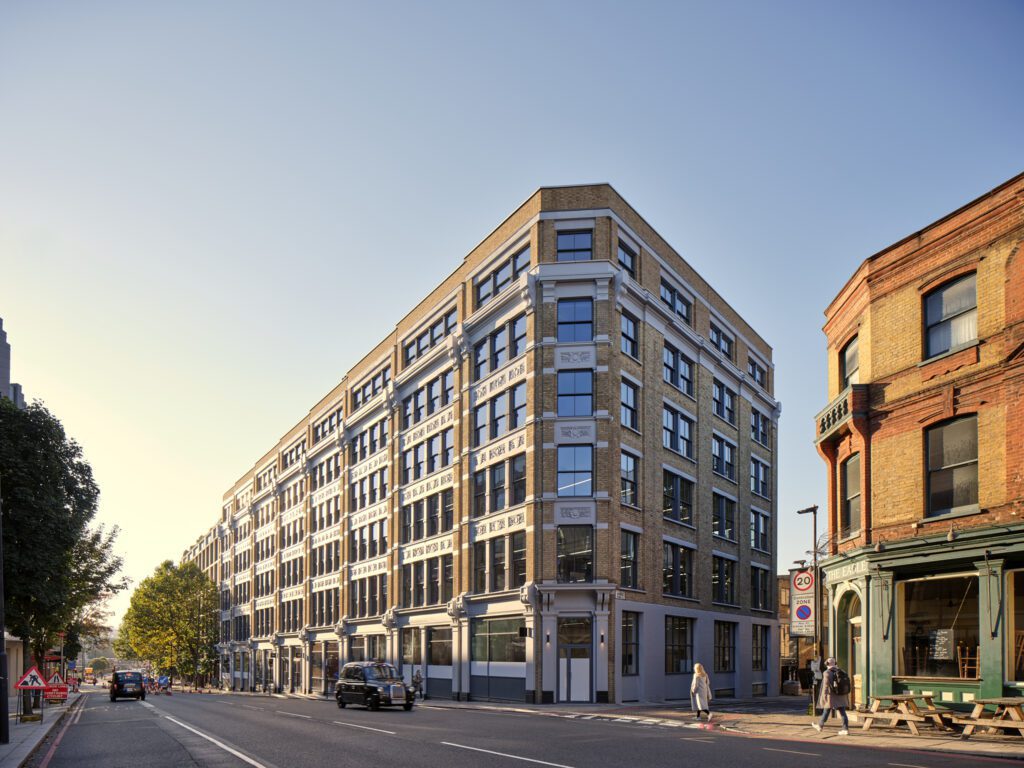
Key Takeaways:
- Energy-efficient timber windows: Gowercroft supplied carbon-negative windows that improved energy performance while maintaining the building’s historic façade.
- Sustainability focus: The project achieved a 32% improvement on the Greater London Authority’s Aspirational Benchmark for sustainability.
- Bespoke craftsmanship: Gowercroft created 330 timber windows to exact specifications, blending modern performance with traditional aesthetics.
- Environmental transparency: Comprehensive Environmental Product Declarations (EPDs) were provided to support sustainability targets.
- Durable materials: Accoya® wood profiles and low-e argon-filled double glazing ensure durability and long-term energy efficiency.
What Were the Challenges of Combining Conservation and Sustainability?
The series of four Grade II listed warehouse buildings on Farringdon Road, designed by the great Victorian architect Alfred Waterhouse, had fallen into disrepair. The challenge was to retrofit and extend the six-storey buildings, adding 900 sqm of workspace, while maintaining their historic identity. The project aimed for BREEAM Excellent New Build and Refurbishment and EPC A standards.
Fathom Architects, working with BentallGreenOak, redesigned the space. The updates included a new reception, a reconfigured basement, refurbished shopfronts, and the addition of a new sixth floor with roof garden terraces.
Replacing the large, single-glazed timber windows was crucial to maintaining the character of the façade.
How Was Whole Life Carbon Performance Improved?
A circular economy approach helped achieve the project’s sustainability goals. The team retained much of the original structure, minimising waste. Ambit Moat, the main contractor, repurposed old floorboards, saving 780 kg of CO2 across 185 sqm. They also recycled roof timbers and 23m of steel, reducing emissions by 5,635 kg of CO2.
Installing energy-efficient timber windows and using natural ventilation through a Variable Refrigerant Flow (VRF) system further reduced the building’s carbon footprint. These efforts led to a 32% improvement on the Greater London Authority’s Aspirational Benchmark for sustainability.
Why Were Gowercroft’s Carbon-Negative Timber Windows Important?
Gowercroft was chosen to supply 330 commercial timber windows from their Classic range, known for its timeless traditional styling, low maintenance, Class 4 air pressure test and high thermal performance. The windows covered about 25% of the building’s façade, so choosing the right replacements was essential.
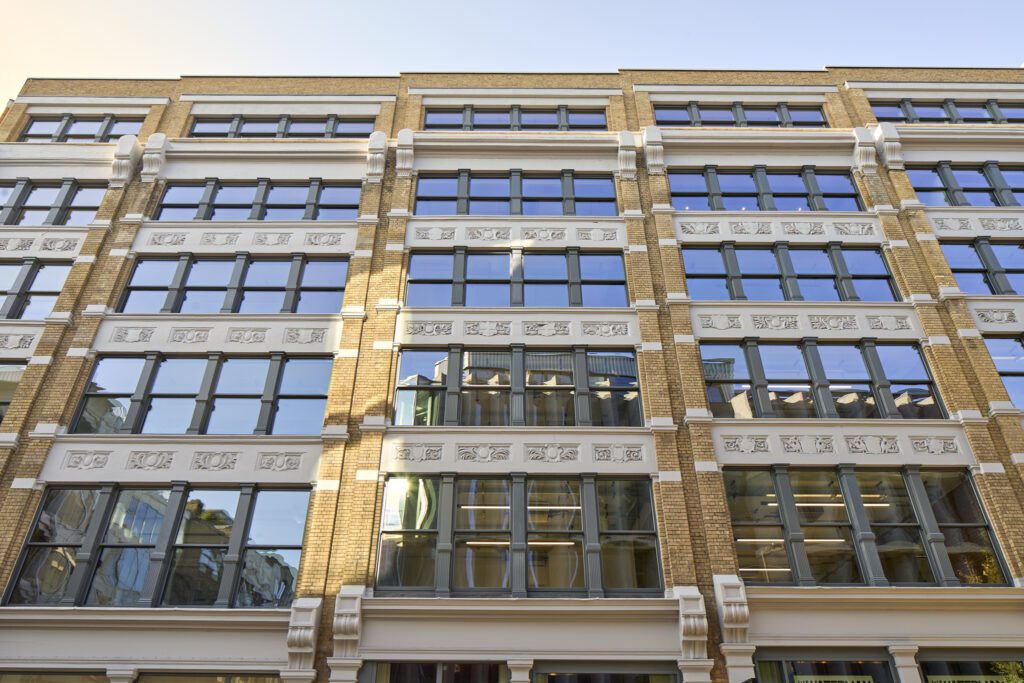
Chatsworth sliding sash windows were installed on the upper floors, while Hardwick flush casements were fitted on the ground floor. The window profiles were made from Accoya® wood, a durable timber sourced from environmentally responsible supply chains. Low-e, argon-filled double glazing improved energy efficiency, and a water-based paint finish ensured a 10-year no-maintenance guarantee. This durability was critical for the six-storey building.
Matt Robinson, Sustainability Manager at Ambit Moat, noted:
“The ambitious scale and quality of the retrofit was such that we needed exceptionally high specification and thermally efficient windows. Our calculations showed that Gowercroft’s products would reduce office energy consumption by 4.55 kWh/m²/year—thereby offsetting the embodied carbon from their manufacture within 6 years.”
What Sustainability Data Did Gowercroft Provide?
Gowercroft provided comprehensive performance data, including product-specific Environmental Product Declarations (EPDs), which offered vital information to specifiers based on life cycle assessment (LCA) data. Unlike many other suppliers, our EPDs aren’t limited to the Cradle to Gate methodology. Cradle to gate only on focuses the product’s life cycle up to the point of sale or delivery.
Instead, we used the more thorough Cradle to Grave methodology. This approach considers the entire life cycle of a product, from the extraction of raw materials through to manufacturing, transportation, use, and eventual end-of-life recovery. By adopting this broader perspective, we provided Ambit Moat with a far more comprehensive view of the environmental impact of our windows.
Gowercroft went the extra mile, going beyond standard data and providing detailed breakdowns on components such as paint, glass, Accoya® wood, and ironmongery. These details enabled accurate carbon calculations, supporting the project’s sustainability targets.
Why Was Gowercroft’s Installation Team Critical for This Historic Project?
The installation of 330 timber windows in The Waterman Building required more than just standard skills. It demanded a team with specialised expertise, capable of handling a project of this size in a historic setting.
Our team expertly navigated difficult site access and dealt with the positioning of steel columns supporting the structure. Where large sash windows sat behind drop ceilings, we extended the internal staff bead. This ensured a smooth connection between the window and ceiling, providing a seamless appearance from the outside.
Window openings varied throughout the building. During our survey, we found that some timber columns between the windows were beyond repair. We provided a solution by manufacturing bespoke replacement timber columns. Each column was custom-made to fit the varying dimensions across different floors.
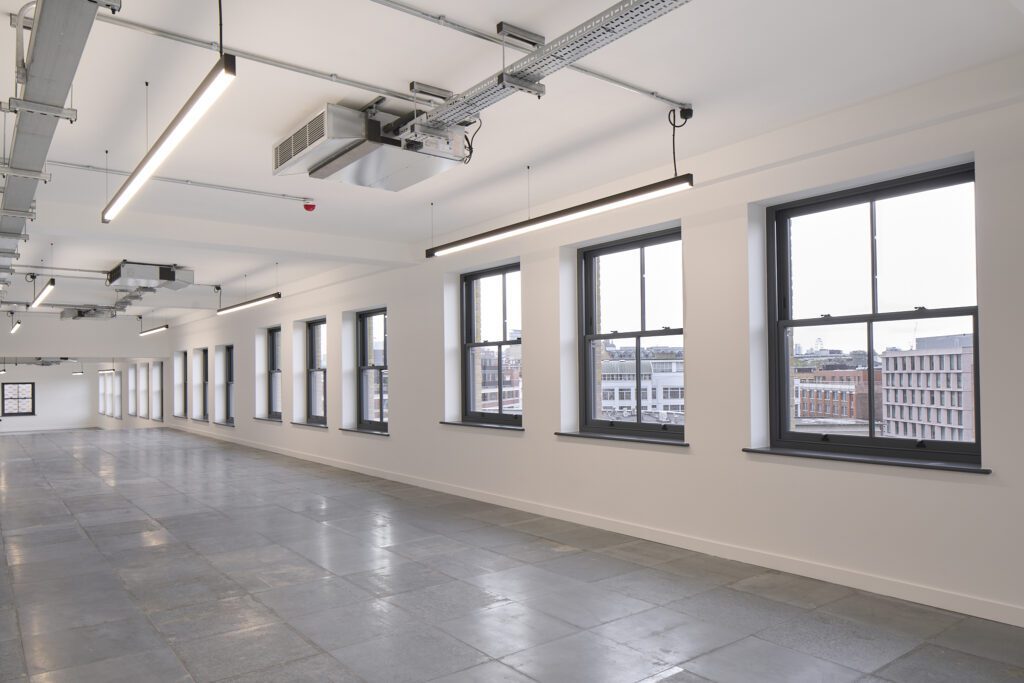
Not just any installers could manage such a complex project. We consistently delivered practical solutions to ensure smooth installation. Whether adjusting window profiles or custom-making components, our team’s expertise ensured the building’s heritage was respected while delivering top-tier modern performance.
What Was the Final Verdict on Working with Gowercroft?
Throughout the project, Gowercroft worked closely with Ambit Moat to meet all performance and sustainability goals.
Matt Robinson, Head of Sustainability at Ambit Moat said:
“We were happy to collaborate with Gowercroft Joinery as the company has a genuine, results-driven commitment to sustainability that is comparable to our own. Their installation was meticulous, and the fact that the team was also able to supply comprehensive sustainability data, including total window materials and CO2 usage, was a massive bonus.”
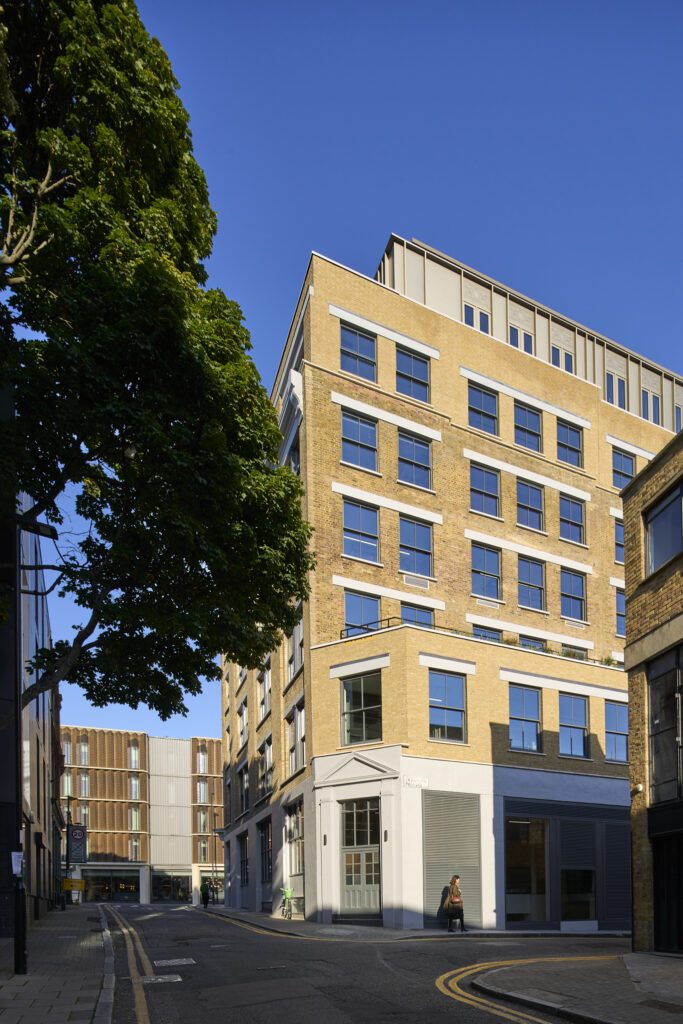
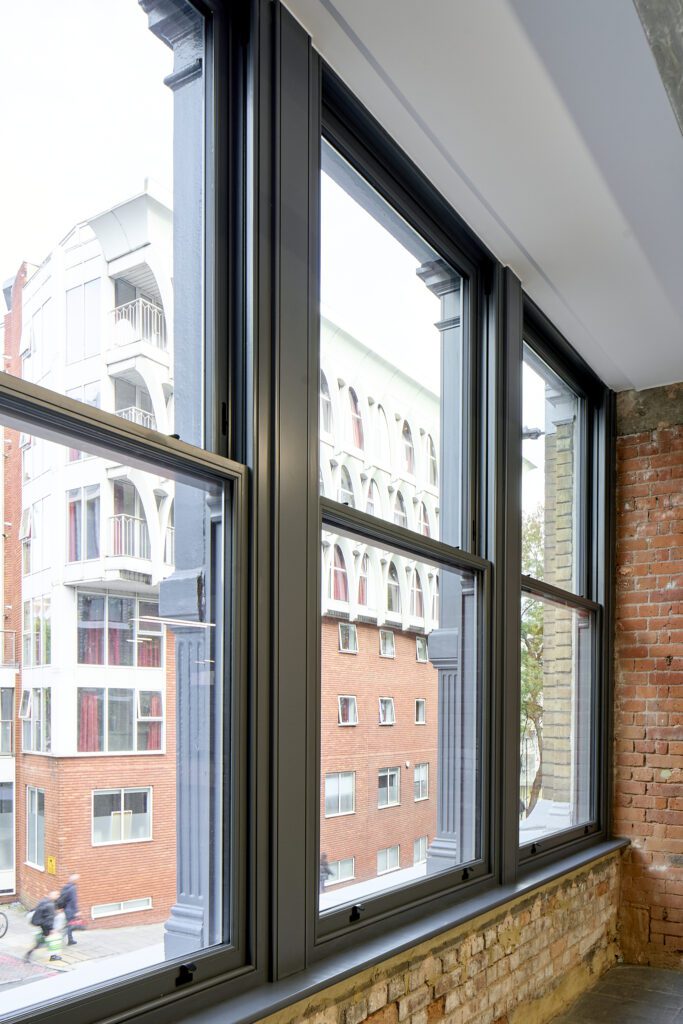
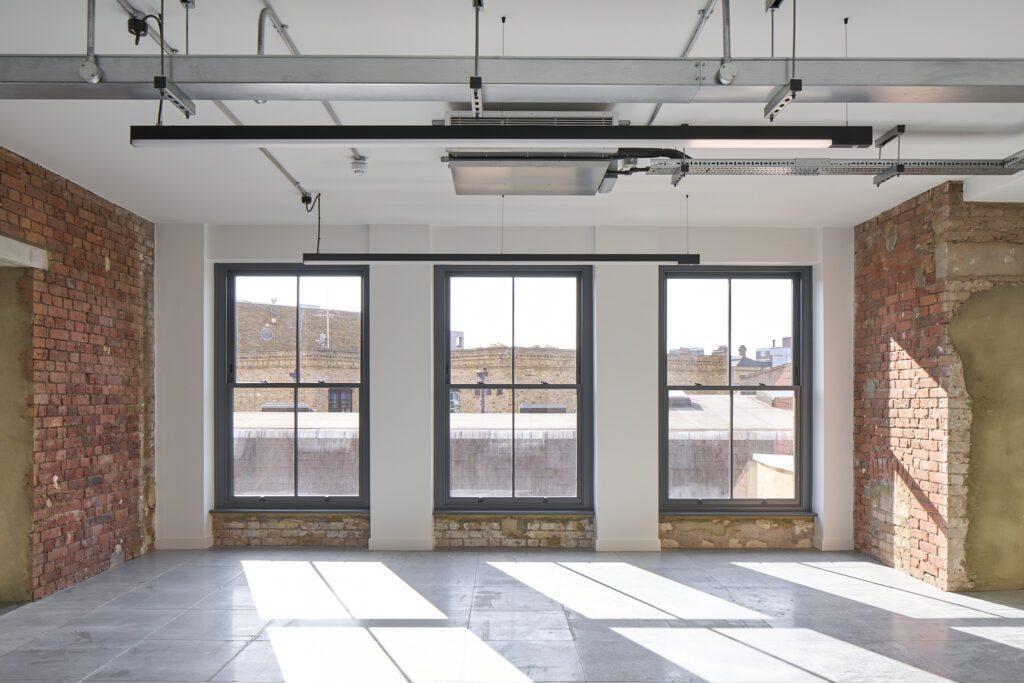
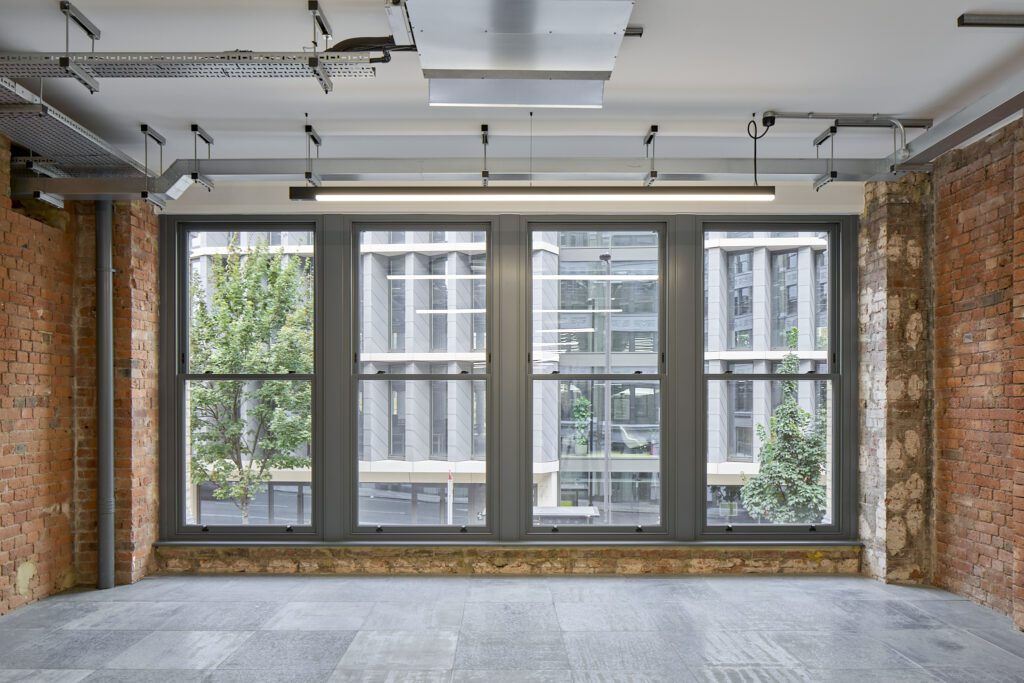
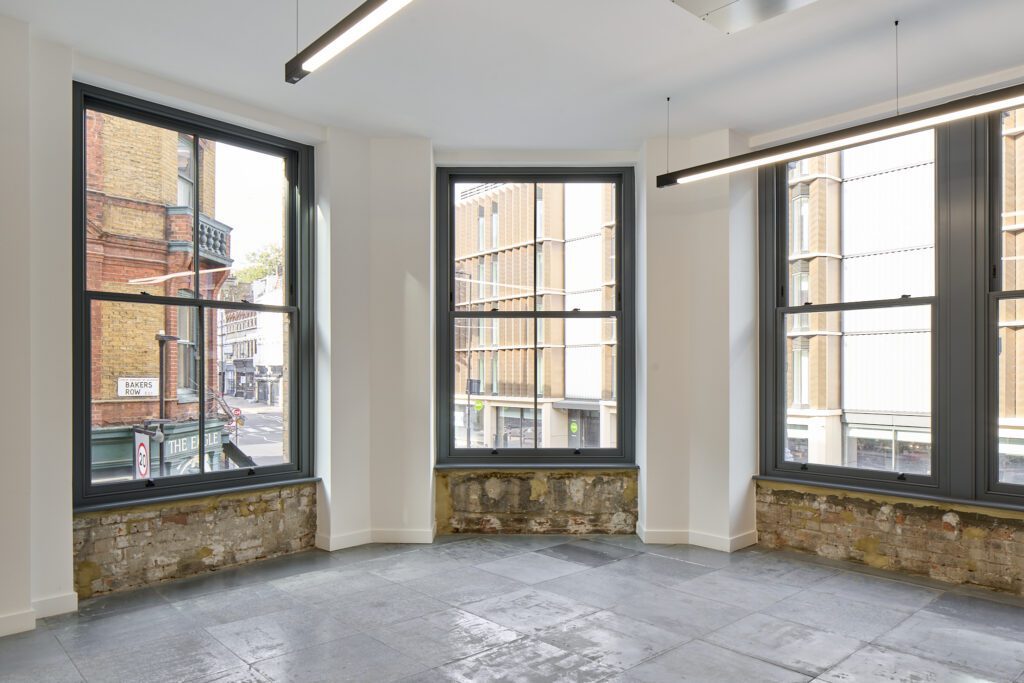
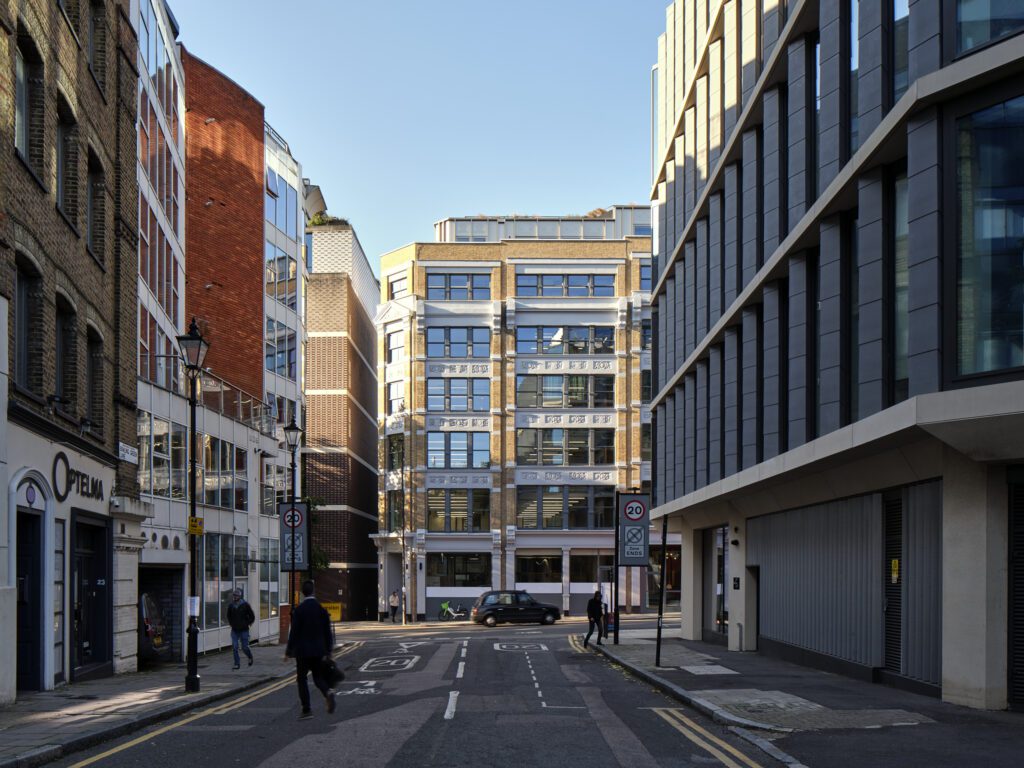
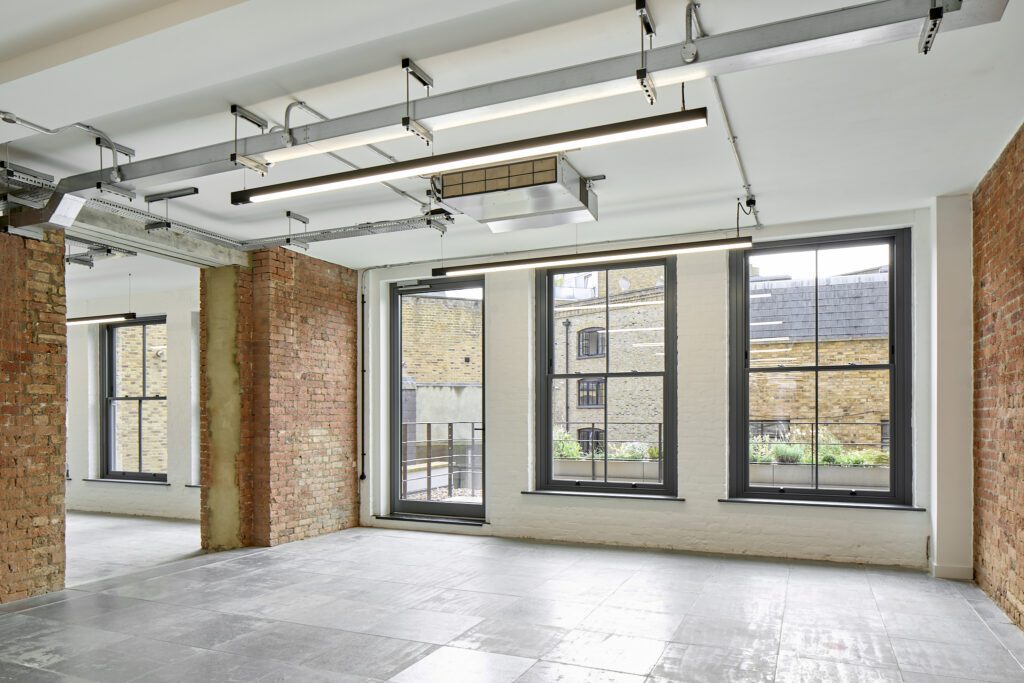
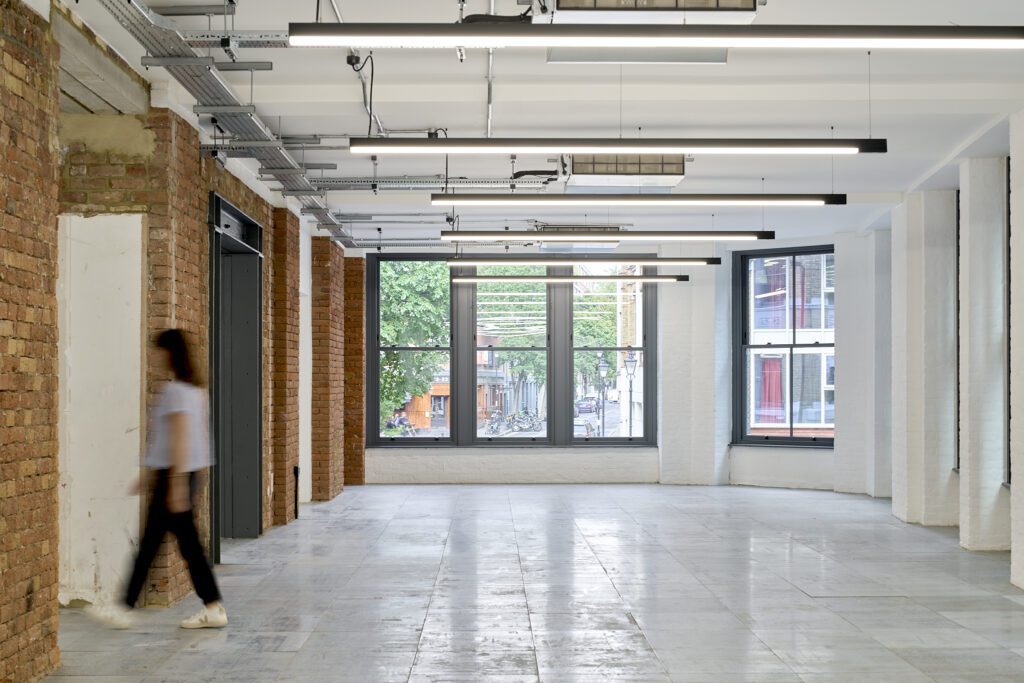
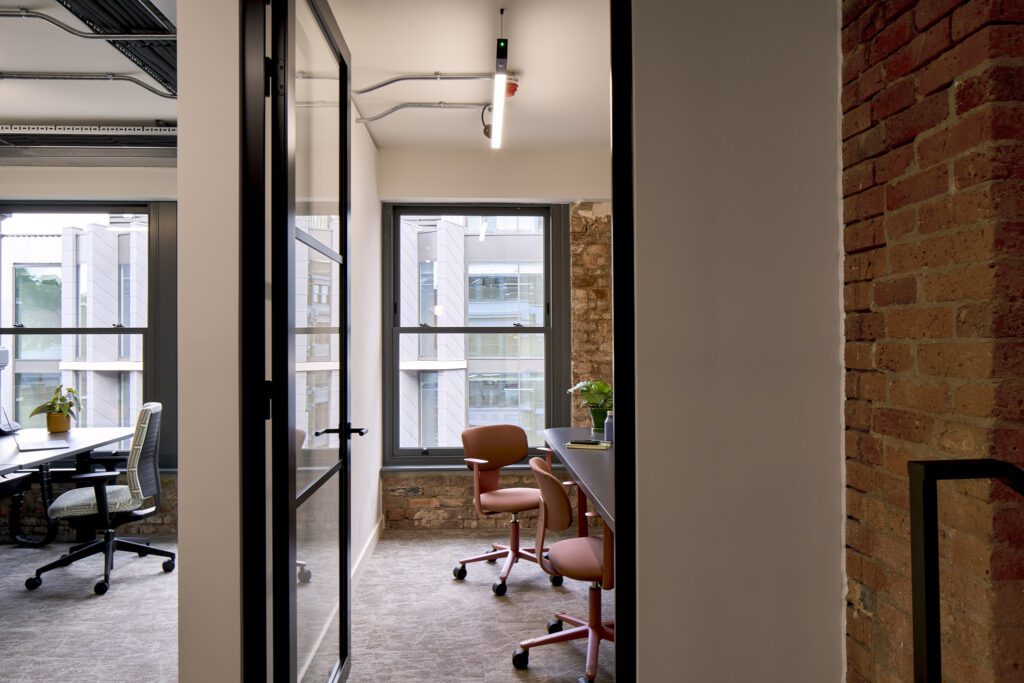
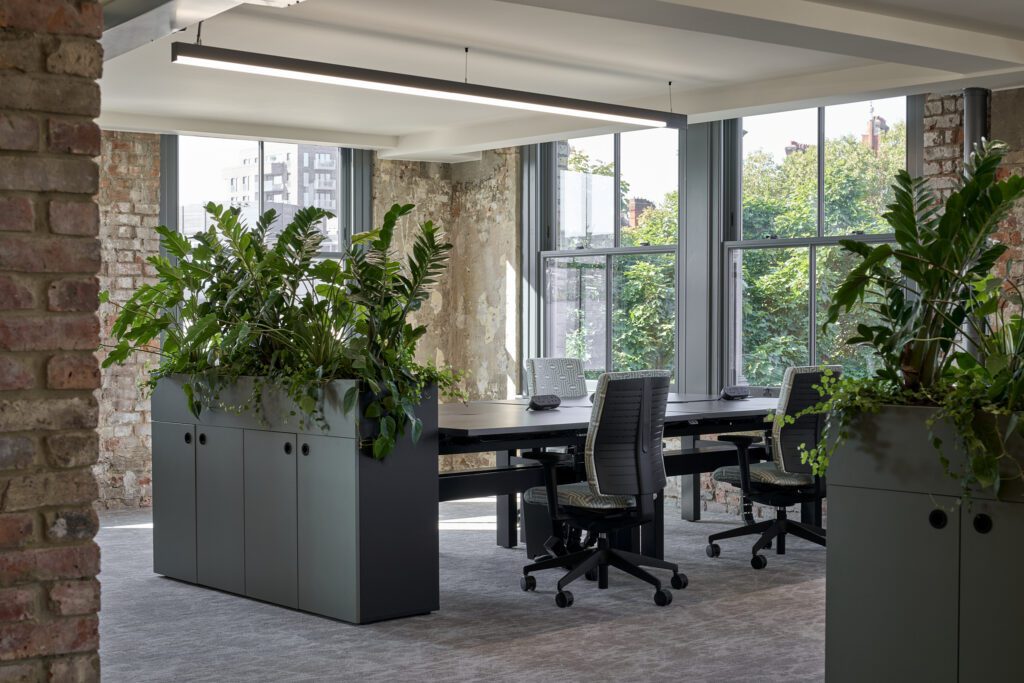
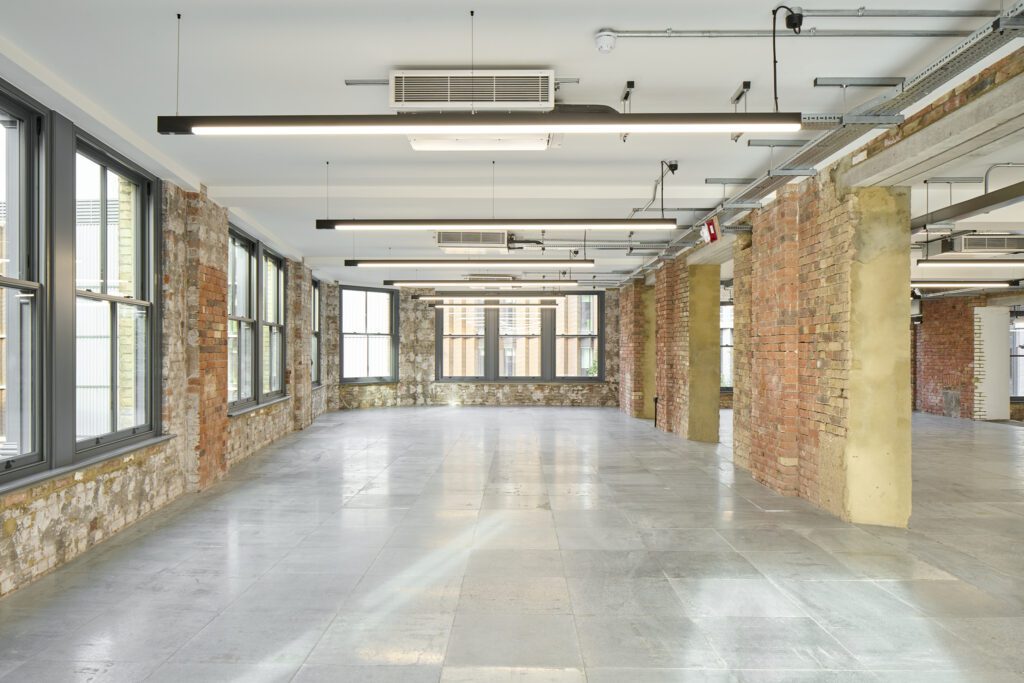
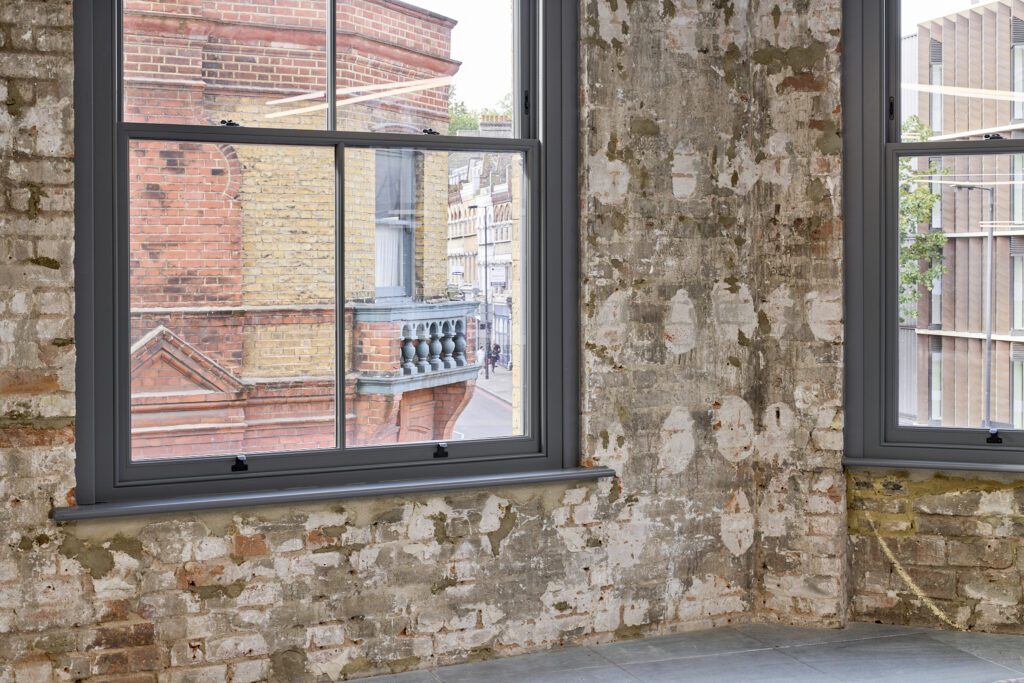
Image credit: Martina Ferrera
Gowercroft’s contribution to The Waterman Building has gained industry recognition, with the project featured in the RIBA Journal. The article highlights how Fathom Architects’ retrofit successfully combined historic preservation with ambitious sustainability goals, achieving a 32% improvement on the Greater London Authority’s Aspirational Benchmark.
This recognition reinforces the role of high-performance timber windows in conservation-led regeneration, proving that heritage buildings can embrace modern sustainability without compromising their character.
Key Products Used:
- Chatsworth Sliding Sash Windows: Crafted from Accoya® wood, featuring traditional styling and energy-efficient low-e argon-filled double glazing.
- Hardwick Flush Casement Windows: Used to create screens, also made from durable Accoya® wood with a no-maintenance water-based paint finish.
Looking for energy-efficient, sustainable windows for your next project? Contact Gowercroft Joinery to see how we can bring durability and sustainability to your building.